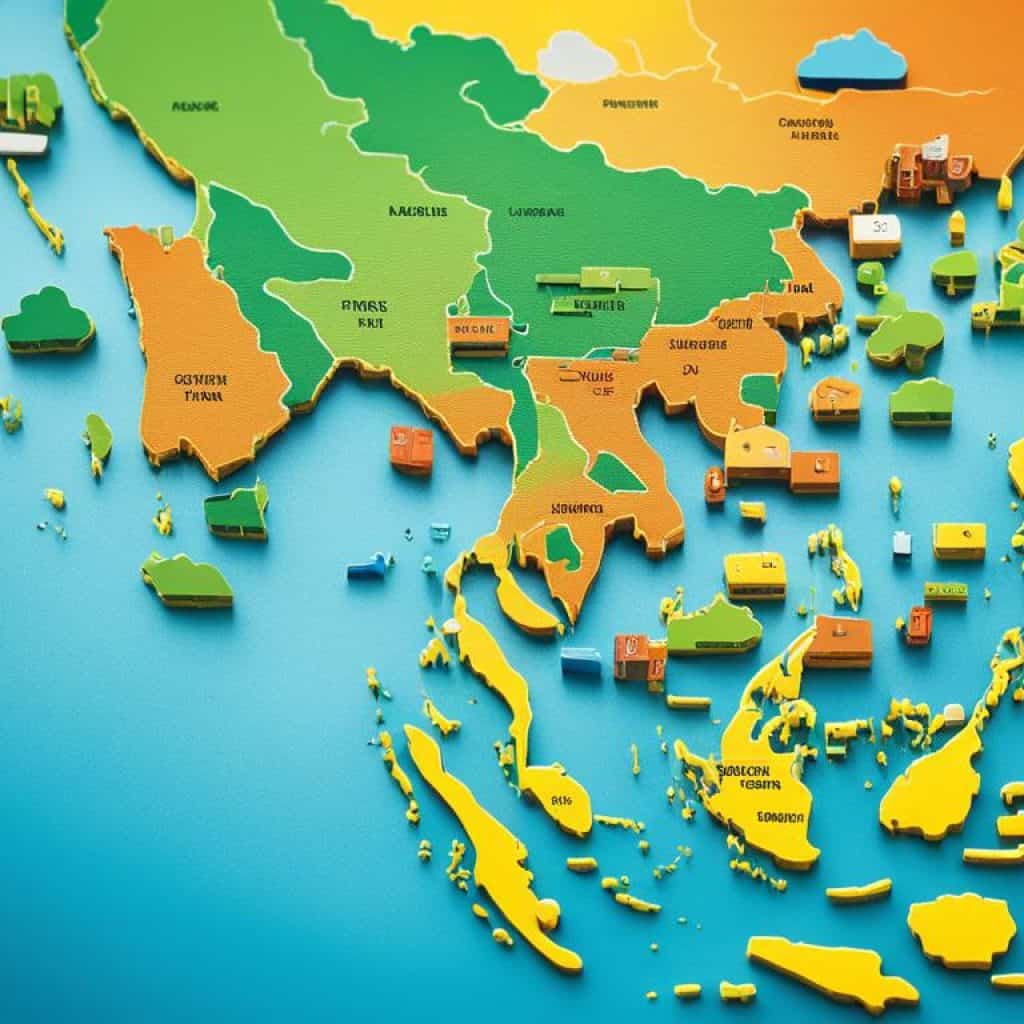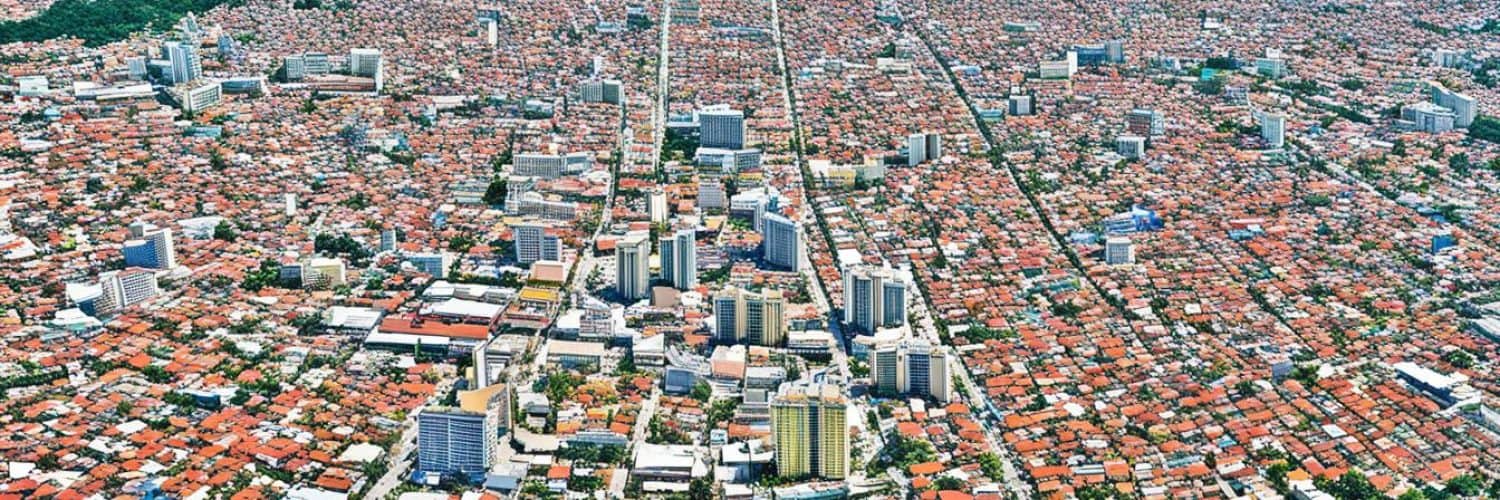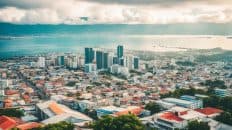Did you know that while some areas in Cebu are experiencing a decline in population, overall, the region’s population is on the rise? Explore the latest population insights, growth rates, demographics, and urban-rural distribution in Cebu to uncover the dynamic trends shaping the region.
Key Takeaways:
- Cebu is experiencing both positive and negative population growth trends.
- Some barangays in Cebu are facing a decline in population.
- The overall population of Cebu has been increasing.
- Explore the latest population insights, growth rates, demographics, and urban-rural distribution in Cebu.
- Uncover the dynamic trends shaping the region.
Global Population Growth: A Phenomenon
In a worldwide perspective, the global human population has been steadily increasing. From 1 billion in 1800 to 7.9 billion in 2020, this exponential growth has numerous implications. Governments around the world are grappling with the challenges posed by this rapid expansion, seeking solutions for economic relief and addressing political red flags.
“The global population growth is an undeniable reality, posing both opportunities and challenges for countries across the globe.” – World Population Review
The increasing global population has significant economic implications. As more people enter the workforce and consumer markets expand, it can stimulate economic growth and drive innovation. However, the sheer numbers can also strain resources, such as food, water, and energy, leading to potential scarcity and economic inequalities.
Furthermore, the political implications of global population growth cannot be ignored. It raises concerns about governance, social stability, and resource distribution. The pressure on governments to ensure adequate infrastructure, healthcare, and education for their growing populations can be a political red flag, triggering unrest and protests if not effectively addressed.
This image provides a visual representation of the global population growth, emphasizing the magnitude of this phenomenon. It serves as a reminder of the challenges that lie ahead as societies navigate the complexities of managing a rapidly expanding population.
Population Decline in Certain Barangays of Cebu City
A phenomenon has been observed in certain barangays of Cebu City, where the population is diminishing instead of increasing. This negative growth rate is reflected in demographics, with specific areas experiencing a contraction in the number of inhabitants. Barangays Lusaran, Kabulihan, Pari-an, and Sto. Niño in the north district of Cebu City are among those cited with high population decline rates.
This population decline in specific barangays of Cebu City is a significant trend that warrants attention. It raises questions about the factors contributing to this decline and the implications for the affected communities. Understanding the reasons behind this negative growth rate is crucial for policymakers, urban planners, and community leaders looking to address the challenges associated with a shrinking population.
One possible explanation for the population decline in these barangays is the migration of residents to other areas. Economic opportunities, access to better education and healthcare facilities, and improved infrastructure in neighboring regions might attract individuals and families away from these specific barangays. Additionally, changing socio-economic dynamics, such as job availability and affordability of housing, can influence population movement within a city.
It is essential to delve deeper into the demographic data and socio-economic indicators of the affected barangays to gain a comprehensive understanding of these population decline trends. By examining factors like employment rates, educational attainment, household incomes, and infrastructure development, it becomes possible to identify potential strategies and interventions to reverse or mitigate this negative growth rate.
“The population decline in specific barangays of Cebu City calls for proactive measures to ensure the sustainable development and well-being of these communities.”
Population Decline in Selected Barangays of Cebu City
| Barangay | Population (2015) | Population (2020) | Population Decline Rate |
|---|---|---|---|
| Lusaran | 2,931 | 2,595 | 11.46% |
| Kabulihan | 4,899 | 3,755 | 23.34% |
| Pari-an | 3,612 | 3,387 | 6.23% |
| Sto. Niño | 2,362 | 1,495 | 36.61% |
The table above highlights the population decline in selected barangays of Cebu City between 2015 and 2020. Significant declines are evident in barangays like Kabulihan and Sto. Niño, where the population decreased by 23.34% and 36.61%, respectively. These figures underscore the magnitude of the negative growth rate and emphasize the need for targeted interventions and policies to address this population decline.
Developing strategies to reverse population decline will require a multifaceted approach. This may involve improving job opportunities and livelihood options within these barangays, enhancing access to quality education and healthcare facilities, upgrading infrastructure, and implementing community development programs to attract residents back to these areas.
By recognizing the population decline in certain barangays of Cebu City as an issue that requires immediate attention, local authorities and stakeholders can work together to create sustainable solutions. Addressing this challenge effectively will contribute to the overall development and well-being of the affected communities while ensuring a thriving and vibrant future for Cebu City as a whole.
Analyzing Population Change in Specific Barangays
When examining the population change in specific barangays in Cebu City, we discover compelling shifts over the years. This analysis provides valuable insights into the dynamics of population growth and decline in the region. Among the barangays experiencing a significant decline in population, Lusaran stands out with a negative growth rate of 11.46%. In 2015, Lusaran had a population of 2,931, but by 2020, it decreased to 2,595 residents. Similarly, Kalubihan and Sto. Niño witnessed substantial population decline rates of 23.34% and 36.61% respectively between 2015 and 2020.
These statistics highlight the challenges faced by certain barangays, shedding light on factors that contribute to their declining populations. Understanding the causes behind these changes can aid policymakers in developing targeted strategies to address the unique needs of these communities.
Impact of Population Size on Community Services
The provision of personalized services within a community is often associated with smaller population sizes. However, when analyzing barangays in Cebu City, this notion appears to be unsupported by empirical data. Comparing barangays with varying population sizes, such as Kabulihan and Sto. Niño, suggests that population size does not necessarily correlate with service quality.
For instance, let’s consider Barangay Lahug, which boasts a population of over 45,000 residents. Despite being highly populated, this barangay may receive similar, if not better, services than the less populated Barangay Talamban, which has approximately 33,000 residents.
The key to understanding this dynamic lies in how community services are managed and allocated. While smaller barangays may have a smaller population to serve, it does not necessarily translate to a higher level of personalized service. Factors such as efficient resource allocation, budgeting, and governance play a crucial role in the quality and extent of services provided, regardless of the community’s population.
“It is important for policymakers to recognize that personalized service delivery should depend on effective management and resource allocation rather than solely on the size of the community population.” – Cebu City Council Representative
To illustrate this point further, let’s take a closer look at some specific services that may dispel the assumption of a direct correlation between population size and personalized service:
| Service | Barangay | Population | Quality of Service |
|---|---|---|---|
| Healthcare | Lahug | 45,000+ | Well-equipped hospitals and clinics, specialized medical services |
| Talamban | 33,000+ | Well-maintained health centers, accessible primary care | |
| Educational Facilities | Lahug | 45,000+ | Public and private schools, universities, specialized educational programs |
| Talamban | 33,000+ | Primary and secondary schools, accessible education opportunities | |
| Public Safety | Lahug | 45,000+ | Police presence, well-coordinated emergency response |
| Talamban | 33,000+ | Community safety programs, prompt emergency services |
This table demonstrates how community services can be tailored to meet the needs of differently sized populations. It emphasizes that the provision of personalized services requires efficient allocation of resources, regardless of the population size. By prioritizing effective management and strategic resource allocation, community officials can ensure that their services cater to the unique needs of their residents in a personalized and comprehensive manner.
Legislative Paradigm: Merging Villages with Small Population
The Local Government Code empowers the Cebu City Council, specifically the Sangguniang Panlungsod, to create and merge barangays in accordance with established guidelines and requirements. This legislative authority provides an opportunity to address the declining population in certain areas by considering the consolidation of villages with small populations through barangay creation and barangay merger.
By strategically combining villages with low population sizes, the Cebu City Council can optimize resources and foster efficient governance. A prime example is the potential merger of Barangays Kabulihan and Sto. Niño, whose combined population falls below 1,500. Consolidating these barangays can enhance service delivery, promote economic development, and strengthen community engagement.
The rationale behind merging villages with small populations lies in the pursuit of sustainability and optimal resource utilization. This initiative ensures that every barangay has adequate representation and access to essential services while promoting the collective well-being of the affected communities.
Through careful evaluation and consultation, the Cebu City Council can identify suitable candidate barangays that meet the criteria for merger, considering population size, geographical proximity, and the potential for synergistic development. This legislative paradigm demonstrates the commitment of the Cebu City Council to adapt and respond to the evolving population dynamics, fostering a more robust and cohesive local government structure.
Benefits of Barangay Merging for Cebu City:
| Advantages | Explanation |
|---|---|
| Streamlined Administration | Consolidating barangays reduces administrative duplication, optimizing resource allocation and minimizing bureaucracy. |
| Enhanced Service Delivery | Merging villages enables efficient provision of public services, such as healthcare, education, and infrastructure development. |
| Financial Efficiency | Pooling resources and sharing costs across merged barangays can lead to improved financial sustainability and more effective budget management. |
| Community Empowerment | By consolidating small population bases, merged barangays can have a stronger voice in decision-making processes and contribute to community development plans. |
| Economic Growth | Merged barangays can leverage shared resources and coordinate economic initiatives, attracting investment and fostering sustainable development. |
The consideration of barangay creation and barangay merger by the Cebu City Council exemplifies a proactive approach to address the changing population dynamics. This legislative paradigm encourages efficient governance, effective service provision, and sustainable development for the benefit of all residents.
Population Overview of the Philippines
The Philippines has a total population of 111.8 million as of January 2022. The population has increased by 1.5 million, with 50.2% being male and 49.8% female. In terms of urban-rural distribution, 48% of the population resides in urban centers, while 52% live in rural areas. These figures provide an overview of the broader population landscape in which Cebu operates.
Gender Distribution
The Philippines population is fairly evenly distributed between males and females, with men comprising 50.2% and women accounting for 49.8% of the total population.
Urban-Rural Distribution
When it comes to urban-rural distribution, 48% of the population lives in urban centers, while the other 52% reside in rural areas. This distribution highlights the varied lifestyles and opportunities available in different parts of the country.
Age Breakdown of the Philippines Population
The median age of the Philippines population is 26.3 years, reflecting a relatively young population. To understand the age distribution more comprehensively, we can categorize the population into various age groups, each representing a specific percentage. Here is an overview of the age groups and their respective proportions:
- Age 0-4: 9.2% of the population falls within this age range, representing the youngest segment of the population.
- Age 5-12: Approximately 16.0% of the population is aged between 5 and 12, highlighting the sizeable population of children in the Philippines.
- Age 65 and above: The elderly population, comprising individuals aged 65 and above, accounts for 5.9% of the total population.
This breakdown provides valuable insights into the age distribution within the Philippines population. With a relatively young population, there are implications for various sectors, including education, healthcare, and social services. Understanding the age demographics is crucial for policymakers and businesses to tailor their strategies and cater to the specific needs of different age groups.
Tackling the Challenges and Harnessing the Potential
“Having a diverse age distribution calls for a multifaceted approach to address the unique challenges and opportunities each age group presents,” says Dr. Maria Santos, a demographer at the University of the Philippines.
Ensuring quality education and healthcare for the young population is essential for their future development. Investments in early childhood development programs and accessible healthcare services can set a solid foundation for their well-being.
As the elderly population grows, prioritizing healthcare and creating age-friendly environments become crucial. Programs and policies that focus on eldercare, retirement planning, and social inclusion can enhance the quality of life for older adults.
The middle-aged population holds significant potential in contributing to the workforce and driving economic growth. By providing vocational training and creating employment opportunities, policymakers can tap into this demographic dividend and harness their skills and experience.
By understanding the age distribution within the Philippines population, policymakers and businesses can develop targeted strategies that cater to the specific needs and aspirations of different age groups. Balancing the challenges and opportunities presented by the demographic landscape is essential for sustainable development and the well-being of the Filipino people.
Internet Use in the Philippines: Statistics and Penetration
The Philippines has a significant number of internet users, with 76.01 million reported in January 2022. This extensive user base demonstrates the widespread use of digital technologies among the population. With an internet penetration rate of 68.0%, it is clear that the adoption of digital platforms and online communication is substantial.
Understanding the digital landscape is crucial when analyzing population demographics and consumer behavior in Cebu. The internet has become an essential tool for information, communication, and engagement, shaping the way people interact with businesses and access services.
Take a look at the statistics below that highlight the current state of internet usage in the Philippines:
Internet Users in the Philippines (January 2022)
- Total internet users: 76.01 million
Internet Penetration Rate in the Philippines (January 2022)
- Internet Penetration Rate: 68.0%
The internet has transformed how businesses and organizations operate, as well as how individuals access information and connect with others. With such a significant digital adoption rate, it is important for businesses in Cebu to consider an online presence and leverage digital platforms to reach their target audience effectively.
| Year | Internet Users (Millions) | Internet Penetration Rate |
|---|---|---|
| 2018 | 67.00 | 59.00% |
| 2019 | 71.60 | 64.00% |
| 2020 | 73.55 | 66.0% |
| 2021 | 75.23 | 67.5% |
| 2022 | 76.01 | 68.0% |
This data showcases the steady growth of internet users and increasing internet penetration rates in the Philippines. It is evident that digital adoption continues to rise, presenting numerous opportunities for businesses to engage with the online audience.

Internet Connection Speeds in the Philippines
Ookla’s data reveals exciting developments in internet connection speeds in the Philippines. The country has experienced significant improvements, empowering users with faster and more reliable digital connectivity. These advancements play a crucial role in bridging the digital divide and fueling the growth of various sectors, including education, e-commerce, and remote work.
Mobile Internet Speeds:
The median mobile internet connection speed in the Philippines has increased by an impressive 106%, reaching an average of 18.68 Mbps in 2022. This boost in mobile internet speed enables users to stream high-definition videos, browse websites seamlessly, and enjoy smooth online gaming experiences. With faster mobile internet, Filipinos can stay connected on the go and leverage the power of the digital world.
Fixed Internet Speeds:
The Philippines has also witnessed remarkable progress in fixed internet connection speeds. The median fixed internet speed has surged by 116%, reaching an average of 46.44 Mbps. This substantial increase empowers users with faster downloads, smoother video conferencing, and enhanced online experiences. Whether it’s for work, entertainment, or communication, faster fixed internet speeds provide a reliable foundation for staying connected at home.
These statistics reflect the growth of internet infrastructure across the country, including areas like Cebu. With better internet connection speeds, individuals and businesses in Cebu can thrive in the digital landscape, unlocking opportunities for innovation, collaboration, and economic growth.
Benefits of Improved Internet Connection Speeds:
- Enhanced productivity: Faster internet speeds enable individuals to complete tasks more efficiently, leading to increased productivity in both professional and personal pursuits.
- Seamless video streaming: With improved speeds, users can enjoy uninterrupted streaming of their favorite shows, movies, and online content.
- Effortless online gaming: Gamers can experience smooth gameplay, reduced lag, and faster response times, enhancing their gaming experiences.
- Efficient remote work: Faster internet speeds facilitate seamless collaboration, file sharing, and video conferencing, making remote work more productive and efficient.
- Accessible online education: Reliable internet speeds enable students to engage in online learning without disruptions, ensuring equal access to educational resources.
These benefits highlight the significance of internet connection speeds in enabling individuals and businesses to harness the full potential of the digital age. As the Philippines continues striving for enhanced digital connectivity, faster internet speeds play a vital role in driving inclusive growth and transforming the way people live, work, and connect with one another.
The Future of Internet Connectivity in the Philippines
The ongoing improvements in internet connection speeds set the stage for a future where seamless connectivity becomes the norm. As technology advances and infrastructure develops, the potential for even faster speeds, broader coverage, and reduced latency continues to expand.
Growing investments in internet infrastructure, such as the government’s National Broadband Program, signal a commitment to enhancing digital connectivity throughout the Philippines. With concerted efforts from both public and private sectors, the future holds great promise for optimized internet speeds, ensuring that Filipinos remain connected in an increasingly digital world.
Table: Comparison of Internet Connection Speeds in the Philippines
| Year | Mobile Internet Speed (Mbps) | Fixed Internet Speed (Mbps) |
|---|---|---|
| 2020 | 9.04 | 21.50 |
| 2021 | 15.05 | 39.44 |
| 2022 | 18.68 | 46.44 |
This table showcases the progressive increase in both mobile and fixed internet connection speeds over the years. As the numbers indicate, the Philippines has made significant strides in improving digital connectivity, ensuring a more seamless online experience for its users.
Social Media Usage in the Philippines
Social media has become an integral part of the lives of millions of people in the Philippines. With 92.05 million social media users reported in January 2022, it is evident that the country has a significant online presence. This accounts for 82.4% of the total population, underscoring the immense popularity and influence of social media in the country.
“Social media has revolutionized the way we connect, communicate, and consume content,” says Mark Sanchez, a social media strategist based in Manila. “It has provided a platform for individuals, businesses, and organizations to reach a wider audience and engage with them in meaningful ways.”
Popular social media platforms like Facebook, YouTube, Instagram, and TikTok have amassed a massive user base in the Philippines. These platforms offer a diverse range of features and content, catering to different interests and preferences.
Facebook, with 83.85 million users in the Philippines in early 2022, remains one of the most widely used social media platforms in the country. Its reach extends to 75% of the total population, making it an essential platform for businesses to connect with their target audience.
YouTube, with 56.50 million users, and Instagram, with 18.65 million users, also have a significant presence in the Philippines. Both platforms provide opportunities for content creators, influencers, and businesses to showcase their creativity and engage with their respective communities.
TikTok, the leading short-form video platform, has gained immense popularity among social media users in the Philippines. With its engaging and entertaining content, it has become a go-to platform for creative expression and viral trends.
Social Media Usage Statistics:
| Platform | Active Users (January 2022) | Penetration Rate |
|---|---|---|
| 83.85 million | 75% | |
| YouTube | 56.50 million | 50.5% |
| 18.65 million | 16.7% | |
| TikTok | N/A | N/A |
The immense popularity of social media platforms in the Philippines presents vast opportunities for individuals, businesses, and marketers to connect with a large online audience. This digital landscape continues to shape consumer behavior, influence trends, and drive the growth of various industries.
As the number of social media users in the country continues to rise, the impact of social media on society and culture also evolves. It is crucial for individuals and businesses to stay informed about the latest social media trends and developments to maximize their engagement and leverage the power of these digital platforms.
Facebook Statistics in the Philippines
Facebook, the popular social media platform, has a significant presence in the Philippines. In early 2022, Facebook had a staggering 83.85 million users in the country, making it a hub for connecting people, sharing content, and engaging with businesses. With such a massive user base, it’s no surprise that Facebook offers immense potential for businesses to reach their target audience.
One of the key metrics that highlights Facebook’s reach is its ad reach, which is equivalent to 75% of the total population. This means that the platform provides businesses with a powerful tool to target and engage a large portion of the Philippine population. Whether you’re a small local business or a multinational corporation, Facebook’s advertising capabilities can help you reach a wide audience and promote your products or services.
When it comes to audience demographics, Facebook in the Philippines has a slightly higher percentage of female users, accounting for 53.3% of the total user base. Male users, on the other hand, make up 46.7% of the Facebook population. This information can be valuable for businesses looking to tailor their marketing strategies to a specific gender demographic.
Overall, Facebook’s extensive user base, high ad reach, and diverse audience demographics make it an essential platform for businesses in the Philippines. Whether you’re looking to boost brand awareness, drive website traffic, or generate leads, harnessing the power of Facebook can play a pivotal role in achieving your marketing goals.
Facebook Statistics in the Philippines at a Glance:
| Statistic | Value |
|---|---|
| Total Facebook Users | 83.85 million |
| Facebook Ad Reach | 75% of the total population |
| Female Users | 53.3% |
| Male Users | 46.7% |
Facebook’s dominance in the Philippine social media landscape opens up exciting opportunities for businesses to connect with their target audience, build brand presence, and drive meaningful engagement. By leveraging the platform’s robust advertising tools and taking into account the unique audience demographics, businesses can maximize their reach and effectively captivate the Facebook community in the Philippines.
YouTube and Instagram Usage in the Philippines
When it comes to social media usage in the Philippines, it’s impossible to overlook the significant presence of YouTube and Instagram. These platforms have become staples in the lives of millions of Filipinos, offering them unique opportunities for entertainment, information, and connection.
According to recent data, YouTube boasts a massive user base of 56.50 million in the Philippines. This means that a staggering 50.5% of the country’s total population is on this video-sharing platform. Such high YouTube users numbers reflect the popularity and influence of the platform among Filipinos.

In terms of ad reach, YouTube also proves to be a valuable platform for advertisers looking to connect with their target audience. With an ad reach equivalent to 50.5% of the total population, businesses have a wide reach to promote their products or services to YouTube users in the Philippines.
Turning our attention to Instagram, it is no stranger to the hearts of Filipinos either. With 18.65 million users, Instagram has captured the attention of Instagram users who amount to approximately 16.7% of the Philippine population. This visually-driven platform allows individuals and businesses to express themselves creatively, fostering engagement and building communities.
As social media continues to shape the way we connect and consume content, YouTube and Instagram present remarkable opportunities for content creators and advertisers alike. With their massive user bases and extensive ad reach, these platforms empower businesses to engage with their target audience in Cebu and beyond, creating impactful online experiences.
YouTube and Instagram offer distinct features and experiences, catering to different preferences and interests. From video content on YouTube to visual storytelling on Instagram, these platforms provide diverse avenues for expression and engagement. It’s no wonder that millions of Filipinos find themselves immersed in the captivating worlds of YouTube and Instagram every day.
Conclusion
The population dynamics of Cebu and the Philippines offer fascinating insights into global population growth and local population decline in certain areas. By understanding the demographics, digital adoption, and social media usage, businesses and policymakers can optimize their strategies for socio-economic development.
Through the power of data, Cebu can leverage its growing numbers to shape a vibrant future for the region. By staying abreast of population statistics, businesses can tailor their offerings and marketing efforts to match the evolving needs and preferences of the population. Policymakers can use this information to plan and allocate resources efficiently, addressing socioeconomic challenges and fostering inclusive growth.
Furthermore, digital adoption and social media usage play a crucial role in today’s interconnected world. Businesses can tap into the digital landscape to reach a wider audience, engage with customers, and drive growth. Understanding the platforms and preferences of the population, such as Facebook, YouTube, and Instagram, enables businesses to create impactful marketing campaigns that resonate with their target audience.
By embracing these insights and applying data-driven strategies, Cebu can position itself as a thriving hub of innovation and development. Harnessing the potential of its growing numbers, Cebu can chart a course towards sustainable socio-economic progress, creating a bright future for both the region and its residents.


















Add comment